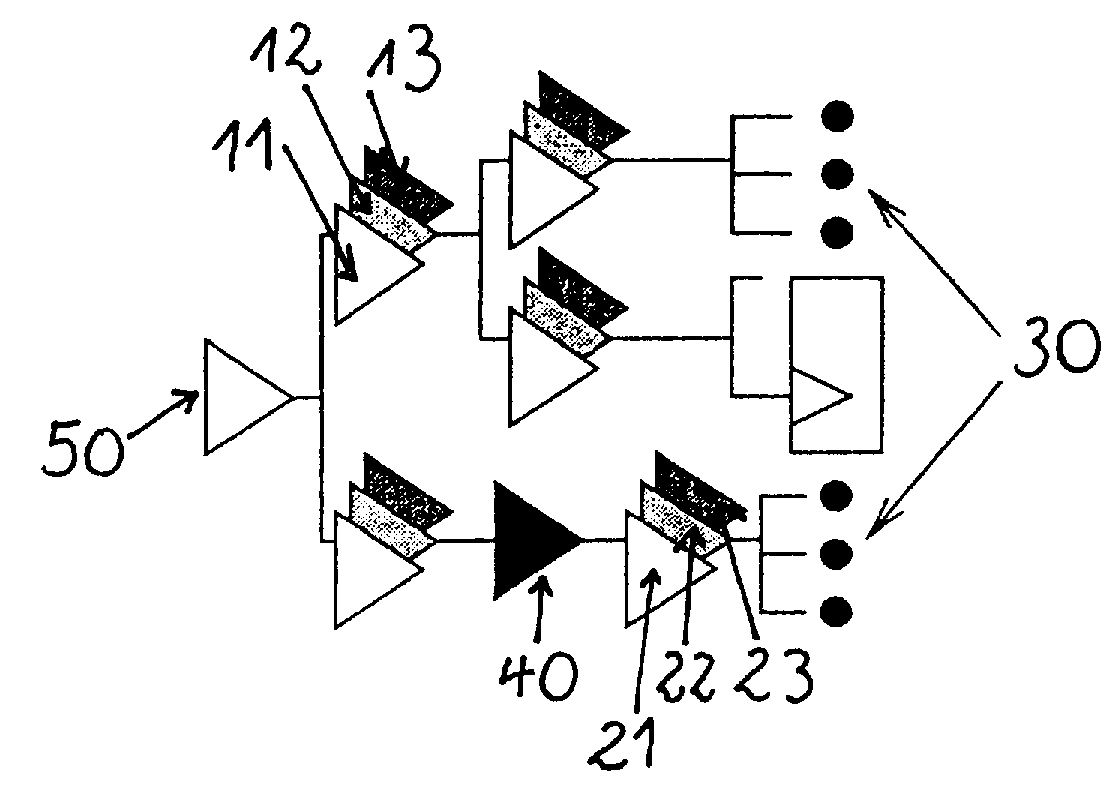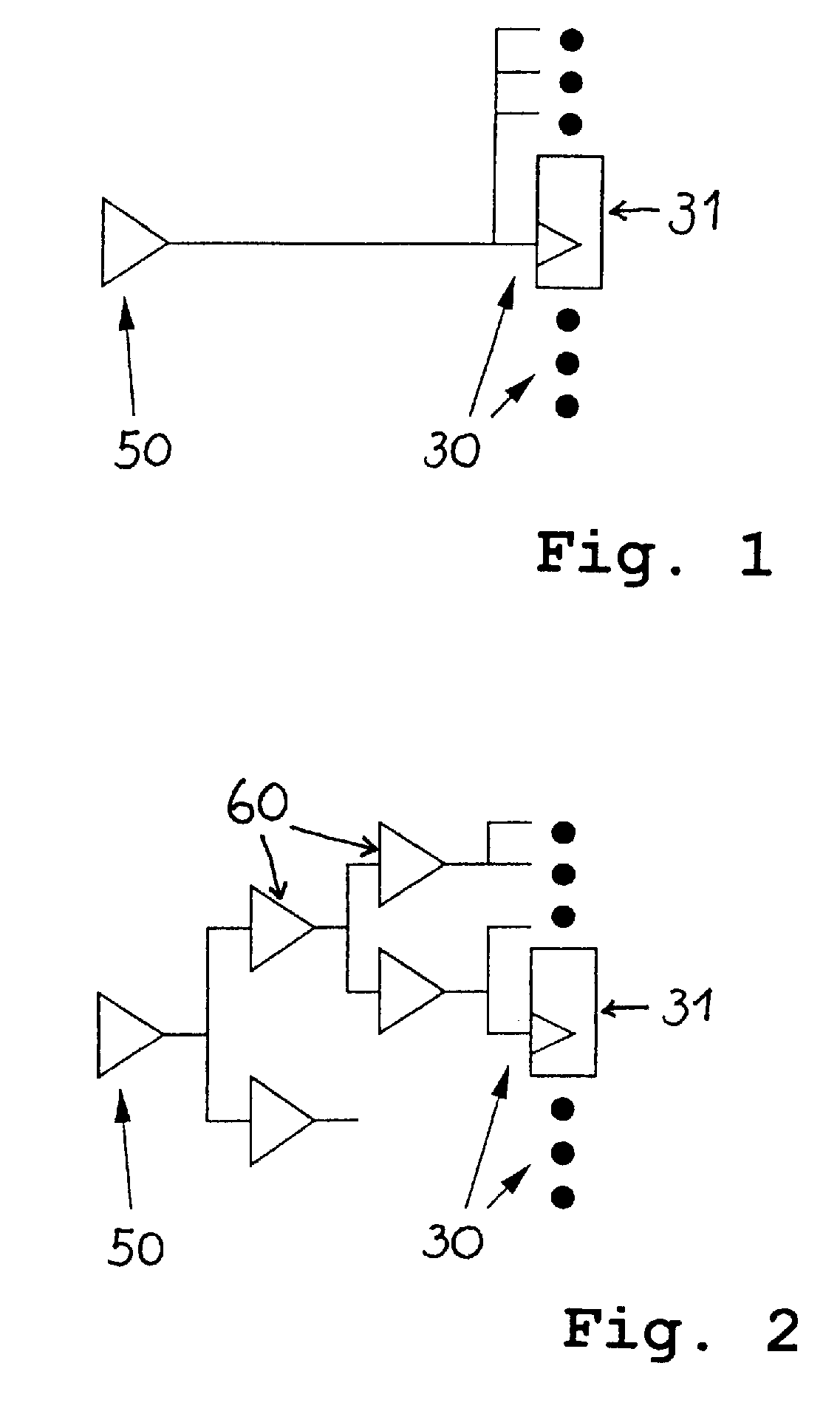Method and computer system for optimizing the signal time behavior of an electronic circuit design
a technology of electronic circuits and signal time behavior, applied in the field of electronic circuit design and manufacture, can solve the problems of not being able to create clones of sequential logic circuits, the checker tools that can compare sequential logic circuits are not ready for use in today's design process, and the clock tree construction has become a challenging problem, so as to achieve the effect of high latency
- Summary
- Abstract
- Description
- Claims
- Application Information
AI Technical Summary
Benefits of technology
Problems solved by technology
Method used
Image
Examples
Embodiment Construction
[0046]FIG. 1 shows a configuration before building a clock tree. The configuration comprises a root driver 50 and several sinks 30, symbolized by black dots, as well as a sink 31, which may be for example, a latch or a RAM.
[0047]FIG. 2 shows a configuration after building a clock tree. A clock tree can have multiple roots though this is not illustrated in the figures. The parallel and serial repowering is typically performed by inserting buffers and / or inverters 60.
[0048]Generally, any circuit which is necessary in a clock tree and which has multiple inputs, e.g. a clock gating circuit, may be cloned. Algorithms for building zero-skew clock trees and skew-scheduled clock trees are known from Held S., Korte B., Maβberg J., Ringe M., Vygen J.: “Clock Scheduling and Clock Tree Construction for High Performance ASICs”, Proceedings of the International Conference on Computer Aided Design, 232-239, 2003.
[0049]FIG. 3 shows a configuration which additionally incorporates a fixed circuit 40 ...
PUM
 Login to View More
Login to View More Abstract
Description
Claims
Application Information
 Login to View More
Login to View More - R&D
- Intellectual Property
- Life Sciences
- Materials
- Tech Scout
- Unparalleled Data Quality
- Higher Quality Content
- 60% Fewer Hallucinations
Browse by: Latest US Patents, China's latest patents, Technical Efficacy Thesaurus, Application Domain, Technology Topic, Popular Technical Reports.
© 2025 PatSnap. All rights reserved.Legal|Privacy policy|Modern Slavery Act Transparency Statement|Sitemap|About US| Contact US: help@patsnap.com



